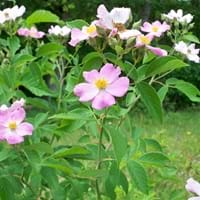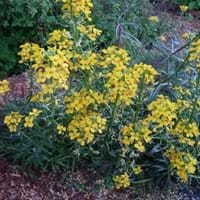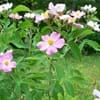Life Span
Perennial
Annual and Perennial
Type
Flowering Plants, Ornamental Plant, Perennial, Shrubs
Tender Perennial
Origin
Canada, Eastern North America
Southern Europe, Mediterranean
Types
Not Available
Not Available
Habitat
Wide range of ecological site
gardens, Grassland, Prairies
USDA Hardiness Zone
Not Available
7-9
AHS Heat Zone
Not Available
9-7
Sunset Zone
Not Available
4, 5, 6, 14, 15, 16, 17, 18, 19, 20, 21, 22, 23, 24
Habit
Clump-Forming
Mat-forming
Flower Color
Baby Pink
Pale White, Pale Yellow, Yellow, Yellow green
Flower Color Modifier
Bicolor
Bicolor
Fruit Color
Non Fruiting Plant
Green
Leaf Color in Spring
Dark Green
Gray Green
Leaf Color in Summer
Dark Green
Gray Green
Leaf Color in Fall
Dark Green
Gray Green
Leaf Color in Winter
Light Green
Light Green
Leaf Shape
Pinnate
Linear
Plant Season
Spring, Summer, Fall
Spring, Summer, Fall, Winter
Sunlight
Full Sun, Partial Sun
Full Sun, Partial Sun
Type of Soil
Loam, Sand
Loam, Sand
The pH of Soil
Acidic, Neutral
Neutral, Alkaline
Soil Drainage
Well drained
Well drained
Bloom Time
Spring, Late Spring, Early Summer, Summer, Late Summer, Early Fall, Fall
Spring, Late Spring, Early Summer, Summer, Late Summer, Early Fall
Repeat Bloomer
Not Available
Yes
Tolerances
Drought
Drought
Where to Plant?
Container, Ground, Pot
Ground
How to Plant?
Cuttings
Seedlings, Stem Cutting
Plant Maintenance
Medium
Medium
Watering Requirements
Average Water Needs
Allow soil to be completely dry in between waterings, Water Deeply, Water less during winter
In Summer
Lots of watering
Lots of watering
In Spring
Moderate
Moderate
In Winter
Average Water
Average Water
Soil pH
Acidic, Neutral
Neutral, Alkaline
Soil Type
Loam, Sand
Loam, Sand
Soil Drainage Capacity
Well drained
Well drained
Sun Exposure
Full Sun, Partial Sun
Full Sun, Partial Sun
Pruning
Remove damaged leaves, Remove dead branches, Remove dead leaves
Cut or pinch the stems, Do not prune during shooting season, Prune if you want to improve plant shape, Prune prior to new growth, Remove deadheads
Fertilizers
All-Purpose Liquid Fertilizer
No fertilizers needed
Pests and Diseases
Beetles, Black Spot, Caterpillars, Downy mildew, Mosaic viruses, Powdery mildew, Rust, Scale insects, Thripes
fungus, Insects, Red blotch
Plant Tolerance
Drought
Drought
Flower Petal Number
Double
Single
Edible Fruit
Not Available
No
Foliage Texture
Medium
Fine
Foliage Sheen
Glossy
Matte
Invasive
Not Available
No
Self-Sowing
Not Available
No
Attracts
Birds, Butterflies
Bees, Birds, Butterflies
Allergy
Rash
Skin irritation
Aesthetic Uses
Showy Purposes
Beautification, Showy Purposes
Beauty Benefits
Not Available
Not Available
Environmental Uses
Air purification
Air purification
Medicinal Uses
Not Available
No Medicinal Use
Part of Plant Used
Flowers
Whole plant
Other Uses
Oil is used in perfume, soaps, creams, etc.
Showy Purposes
Used As Indoor Plant
Yes
No
Used As Outdoor Plant
Yes
Yes
Garden Design
Container, Cutflower, Feature Plant, Foundation, Mixed Border, Topiary / Bonsai / Espalier
Alpine, Container, Edging, Foundation, Groundcover, Mixed Border, Rock Garden / Wall
Botanical Name
Rosa carolina
Erysimum franciscanum
Common Name
Carolina rose, pasture rose, low rose
Franciscan wallflower, San Francisco wallflower
In Hindi
Carolina rose
Franciscan wallflower
In German
Carolina stieg
Franziskaner Mauerblümchen
In French
Rosa carolina
wallflower franciscaine
In Spanish
Carolina se levantó
alhelí franciscana
In Greek
Καρολίνα τριαντάφυλλο
Φραγκισκανών wallflower
In Portuguese
Carolina Rosa ou Pasture Rose
wallflower Franciscan
In Polish
Karolina róży
wallflower Franciszkanów
In Latin
Carolina resurrexit
Francisci Wallflower
Phylum
Magnoliophyta
Magnoliophyta
Class
Magnoliopsida
Magnoliopsida
Order
Rosales
Brassicales
Family
Rosaceae
Brassicaceae
Clade
Not Available
Angiosperms, Eudicots, Rosids
Tribe
Not Available
Not Available
Subfamily
Not Available
Not Available
Number of Species
Not Available
Not Available
Season and Care of Carolina Rose and Franciscan Wallflower
Season and care of Carolina Rose and Franciscan Wallflower is important to know. While considering everything about Carolina Rose and Franciscan Wallflower Care, growing season is an essential factor. Carolina Rose season is Spring, Summer and Fall and Franciscan Wallflower season is Spring, Summer and Fall. The type of soil for Carolina Rose is Loam, Sand and for Franciscan Wallflower is Loam, Sand while the PH of soil for Carolina Rose is Acidic, Neutral and for Franciscan Wallflower is Neutral, Alkaline.
Carolina Rose and Franciscan Wallflower Physical Information
Carolina Rose and Franciscan Wallflower physical information is very important for comparison. Carolina Rose height is 90.00 cm and width 60.00 cm whereas Franciscan Wallflower height is 30.50 cm and width 30.50 cm. The color specification of Carolina Rose and Franciscan Wallflower are as follows:
Carolina Rose flower color: Baby Pink
Carolina Rose leaf color: Dark Green
Franciscan Wallflower flower color: Pale White, Pale Yellow, Yellow and Yellow green
- Franciscan Wallflower leaf color: Gray Green
Care of Carolina Rose and Franciscan Wallflower
Care of Carolina Rose and Franciscan Wallflower include pruning, fertilizers, watering etc. Carolina Rose pruning is done Remove damaged leaves, Remove dead branches and Remove dead leaves and Franciscan Wallflower pruning is done Cut or pinch the stems, Do not prune during shooting season, Prune if you want to improve plant shape, Prune prior to new growth and Remove deadheads. In summer Carolina Rose needs Lots of watering and in winter, it needs Average Water. Whereas, in summer Franciscan Wallflower needs Lots of watering and in winter, it needs Average Water.





